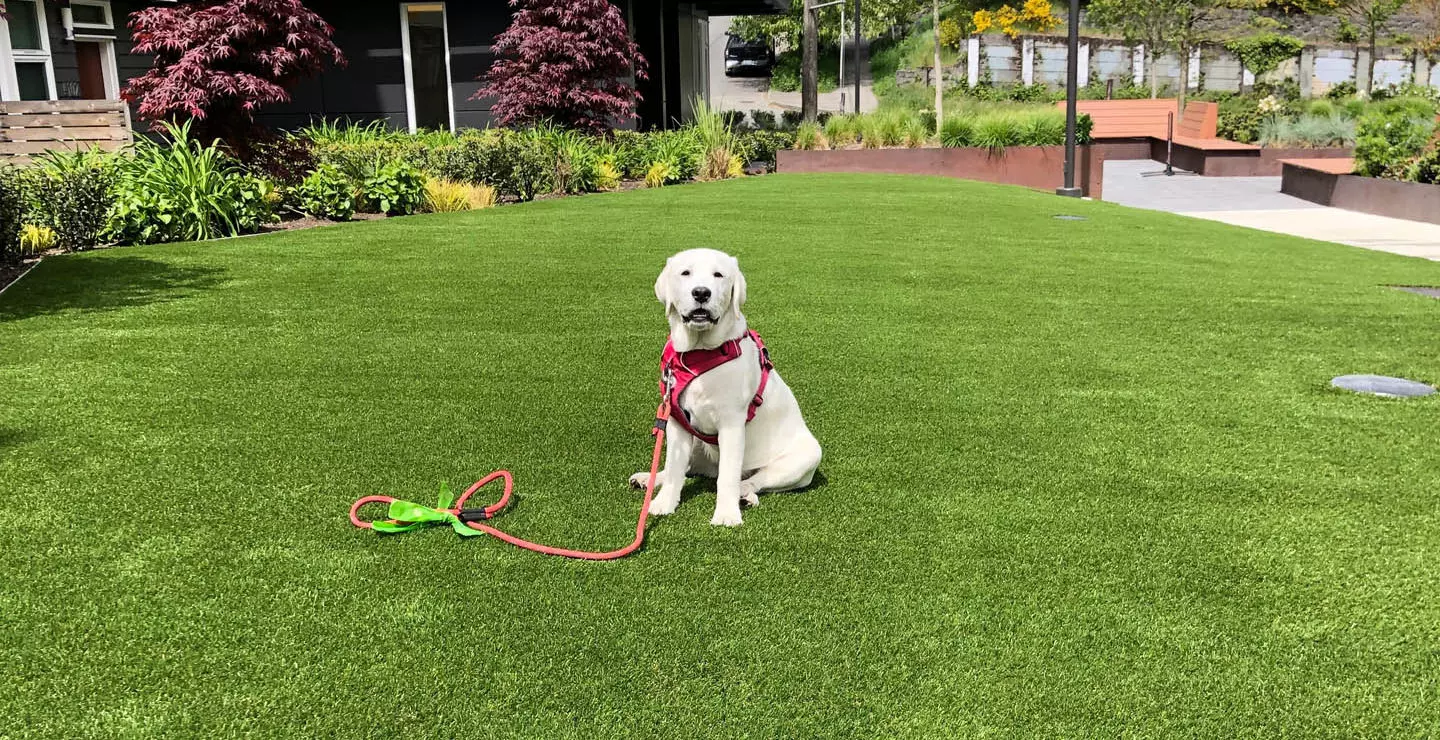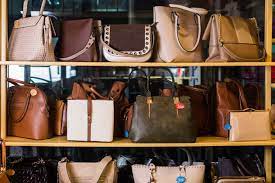Artificial grass is a fantastic option for dog owners who want a beautiful, low-maintenance lawn that can withstand the challenges of pets. In this article, we will discuss effective ways “how to care for artificial grass with dogs.” Discover how to keep your artificial grass in excellent condition while ensuring the happiness and health of your furry friends.
Benefits of Artificial Grass with Dogs
Artificial grass offers several advantages specifically tailored to dog owners. Understanding these benefits can help you appreciate why caring for your artificial grass is essential.
Low Maintenance
One of the most significant advantages of artificial grass for dogs is its low maintenance requirements. Unlike natural grass, it doesn’t need regular mowing, watering, or fertilizing. You can say goodbye to spending your weekends tending to your lawn and instead enjoy quality time with your four-legged companions.
Durability
Artificial grass is designed to withstand heavy foot traffic and playful pets. It is made from durable materials that can resist wear and tear caused by running, digging, and other dog-related activities. You can have peace of mind knowing that your artificial lawn will remain beautiful and intact even with active dogs.
No More Mud or Dirt
Dogs love to explore and can bring dirt and mud into your home, especially after a rainy day. With artificial grass, you no longer have to worry about muddy paws ruining your floors. The grass surface remains clean and dry, regardless of the weather, making it easier to keep your house tidy.
Pet-Friendly Surface
Artificial grass provides a comfortable and safe surface for your dogs to play, run, and relax. It offers a cushioned feel under their paws and minimizes the risk of injuries. Unlike natural grass, it doesn’t develop uneven surfaces or holes that could cause trips or falls.
Allergy-Free
Some dogs are prone to allergies caused by grass pollen or certain types of grass. Artificial grass eliminates this problem as it doesn’t produce pollen or harbor allergens. Your dogs can freely enjoy the outdoors without suffering from itching, sneezing, or other allergic reactions.
Cleaning Artificial Grass with Dogs
Keeping your artificial grass clean is essential to maintain its appearance and longevity. Here are some effective cleaning techniques specifically tailored for dog owners:
Regular Brushing
Regularly brushing your artificial grass helps remove loose debris, pet hair, and dander. Use a stiff-bristle brush or a power broom to sweep the surface in different directions. This process also helps keep the grass blades upright, ensuring a natural and fresh appearance.
Removing Pet Waste
Promptly removing pet waste is crucial to prevent odors and staining. Use a pooper scooper or plastic bag to pick up solid waste. For liquid waste, blot the area with paper towels and rinse it with water to dilute any remaining residue.
Dealing with Urine Odor
Urine odor can be a concern for dog owners. To neutralize the odor, rinse the affected area thoroughly with water. You can also use a pet-friendly artificial grass deodorizer or create a homemade solution by mixing equal parts of water and vinegar.
Rinsing and Washing
Occasionally, it’s beneficial to rinse the entire artificial grass area with water. This process helps flush out any accumulated dirt, dust, or cleaning residue. For more thorough cleaning, you can use a mild detergent mixed with water and a soft brush to scrub away stubborn stains. Rinse the surface thoroughly afterward to remove any soapy residue.
Preventing Damage to Artificial Grass
While artificial grass is highly durable, taking precautions can further extend its lifespan. Here are some tips to prevent damage caused by dogs:
Proper Training
Training your dogs to use designated areas for their bathroom needs can help protect your artificial grass. Teaching them where to go and rewarding positive behavior reduces the chances of them urinating or defecating on the grass surface.
Avoid Chemicals
Avoid using harsh chemicals or strong cleaning agents on your artificial grass, as they can damage the fibers and compromise their integrity. Stick to pet-friendly cleaning solutions or consult with professionals for suitable products.
Trim Nails Regularly
Keeping your dog’s nails trimmed helps prevent accidental punctures or tears in the artificial grass. Long nails can catch on the fibers and cause damage when your dog runs or plays on the surface.
Addressing Digging
If your dog has a tendency to dig, it’s important to address this behavior to protect your artificial grass. Provide an alternative digging spot with loose soil or sand and encourage them to use it instead. Diverting their attention with toys or interactive play can also help deter digging.
Controlling Chewing
Some dogs may be tempted to chew on the artificial grass, which can cause damage over time. Train your dog to avoid chewing the grass and provide suitable chew toys or treats to redirect their chewing behavior.
Dealing with Pet Stains and Odors
Accidents happen, and it’s important to know how to effectively deal with pet stains and odors on your artificial grass:
Using Pet-Friendly Cleaning Solutions
Opt for pet-friendly cleaning solutions specifically designed to eliminate pet stains and odors. These products are safe for your dogs and won’t harm the artificial grass. Follow the manufacturer’s instructions for application and ensure thorough rinsing afterward.
Natural Remedies
For a more natural approach, you can use homemade remedies to tackle pet stains and odors. Baking soda is known for its odor-absorbing properties. Sprinkle it generously over the affected area, leave it for a few hours, and then vacuum it up.
Professional Cleaning
For stubborn stains or deep cleaning, consider hiring professional artificial grass cleaners. They have the knowledge, expertise, and specialized equipment to effectively remove tough stains, eliminate odors, and rejuvenate your artificial grass.
Protecting Artificial Grass from Heat
Artificial grass can become hot under direct sunlight, which may cause discomfort to your dogs. Here are some ways to protect the grass and keep it cool:
Providing Shade
Create shaded areas in your outdoor space where your dogs can seek relief from the sun. Install umbrellas, awnings, or trees to provide natural shade over the artificial grass.
Watering the Surface
Spraying water over the artificial grass surface can help cool it down during hot days. Use a hose or a sprinkler system to lightly mist the area, providing a refreshing sensation for your dogs.
Using Artificial Grass Coolers
Artificial grass coolers are products specifically designed to lower the temperature of the grass surface. They are easy to apply and can significantly reduce heat absorption, making the artificial grass more comfortable for your dogs.
Tips for Maintaining a Healthy Lawn
In addition to caring for your artificial grass with dogs, it’s important to follow general maintenance practices to ensure a healthy and long-lasting lawn:
Regular Inspections
Regularly inspect your artificial grass for any signs of damage, wear, or potential issues. Look out for loose seams, tears, or areas that may require additional attention.
Treating Weeds and Moss
Although artificial grass is resistant to weeds and moss, it can occasionally appear. Promptly remove any weeds or moss using specialized artificial grass weed killers or by manually pulling them out.
Avoiding Heavy Furniture
Avoid placing heavy furniture or equipment directly on the artificial grass, as it may leave permanent indentations or damage the fibers. Use pads or platforms underneath the furniture to distribute the weight evenly.
Preventing Excessive Use
While artificial grass is designed to withstand heavy use, excessive foot traffic in specific areas can cause flattening or wear. Encourage your dogs to explore different parts of the lawn to distribute the wear more evenly.
Professional Maintenance
Consider scheduling professional maintenance for your artificial grass. Experts can perform deep cleaning, repair any damage, and provide specialized treatments to keep your lawn in top condition.
Conclusion
Caring for artificial grass with dogs requires attention and regular maintenance, but the benefits are well worth the effort. With its low maintenance requirements, durability, and pet-friendly features, artificial grass provides an excellent alternative to traditional lawns. By following the cleaning techniques, preventing damage, dealing with stains and odors, and protecting it from heat, you can ensure your artificial grass remains beautiful and safe for your furry friends for years to come.
FAQs
1. Can dogs damage artificial grass?
Artificial grass is designed to withstand the activities of dogs, but excessive digging, chewing, or rough play can potentially damage the surface. Taking preventive measures, such as proper training and regular maintenance, can minimize the risk of damage.
2. How often should I clean artificial grass with dogs?
Regular cleaning is recommended, especially for areas frequently used by your dogs. Removing solid waste promptly and performing routine brushing and rinsing will help maintain the cleanliness of your artificial grass.
3. Are there any special cleaning products for artificial grass and dogs?
Yes, there are specific cleaning products available that are designed to be safe for both artificial grass and dogs. These products effectively remove stains and odors without causing any harm to the grass or your pets.
4. Will artificial grass cause allergies for dogs?
No, artificial grass does not produce pollen or harbor allergens, making it a suitable option for dogs with grass allergies. However, it’s always important to monitor your dog’s health and consult with a veterinarian if any allergy symptoms arise.
5. Can I install artificial grass myself?
While it’s possible to install artificial grass yourself, it is recommended to hire professionals for the best results. They have the expertise, tools, and experience to ensure proper installation, which contributes to the longevity and performance of your artificial grass.




